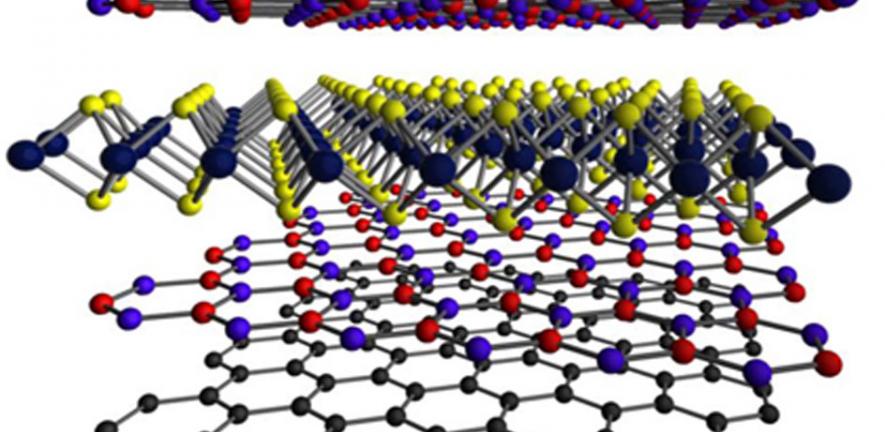
Researchers are aiming to develop a new class of materials with remarkable properties using one atom-thick substances such as graphene and other two dimensional crystals in a new collaborative project.
Researchers are aiming to develop a new class of materials with remarkable properties using one atom-thick substances such as graphene and other two dimensional crystals in a new collaborative project.
The impact of the proposed research can be imagined considering that graphene is just one of a potentially endless range of embodiments of the general concept we aim to explore.
Andrea Ferrari
The proposal, which will involve researchers from the Universities of Manchester, Cambridge and Lancaster, has been awarded 13.4 million Euros (around £11m) to form a “Synergy Group” by the European Research Council (ERC).
The Synergy Group will aim to utilise two-dimensional substances to engineer new types of materials which are just a few atoms thick, but nevertheless have the power to revolutionise the future development of devices such as solar cells, and flexible and transparent electronics.
Starting with one atom-thick substances which possess remarkable properties, the group will focus on ways in which they can be layered up to form ‘heterostructures’. These heterostructures will still be just a few atoms thick, but will combine the properties of the different two-dimensional materials which comprise them, effectively enabling developers to embed the functions of a device into its very fabric.
For example, the research team envisage combining an atomic layer which functions as a sensor, with layers that function variously as an amplifier, transistor, or solar cell, for power generation. The resulting material, still just a few atomic layers in thickness, would be capable of running a whole circuit.
The award to launch the project was announced by the ERC as part of its first competition for ‘Synergy Grants’, which were introduced last year on a pilot basis. It will bring together the talents of the Nobel Prize-winner, Professor Kostya Novoselov at Manchester, Professor Andrea Ferrari at Cambridge, and Professor Vladimir Falko at Lancaster.
The team will be part of the UK’s Graphene Global Research and Technology Hub, including the £61m National Graphene Institute. By combining the properties of different two-dimensional materials, they aim to create an amazing range of applications and devices, among them new types of transistors, solar cells and other optoelectronic components.
Professor Novosleov said: “The award of the Synergy Grant is an exciting development. We bet on the high-risk idea that by combining the properties of several, one-atom thick materials into a single, three-dimensional heterostructure, we would create a new class of materials with predetermined properties and multiple functionalities.”
“You might think that building materials layer by layer is science fiction. But if we succeed, this new combination of known materials, the two-dimensional atomic crystals, built layer by layer, will offer an amazing range of applications and devices.”
Professor Ferrari said: “The impact of the proposed research can be imagined considering that graphene is just one of a potentially endless range of embodiments of the general concept we aim to explore in this project. This new field of research will open new horizons and opportunities for science, technology and scholarship.”
“The combined expertise in physics, engineering and theoretical modelling combing from the synergy of our three groups and institutions will be key to achieving our objectives.”
In total, 11 projects from more than 700 original applications were selected to receive ERC funding.
The President of the ERC, Professor Helga Nowotny, said: “The ERC Synergy Grant provides a unique opportunity for outstanding scientists to explore jointly-formulated research questions, which take them beyond normal – even if otherwise excellent – science.”
“It aims to bring together the right kind of people at the right time, in the right configuration, to work on the right kind of problem. This grant scheme gives researchers a lot of freedom to work together in new ways.”
This work is licensed under a Creative Commons Licence. If you use this content on your site please link back to this page.





